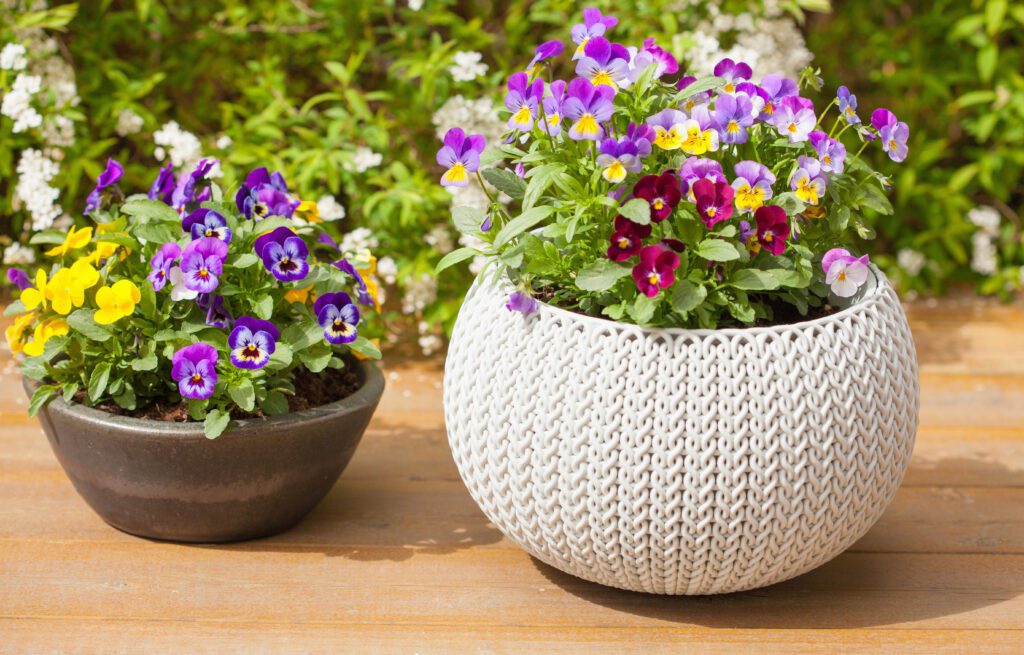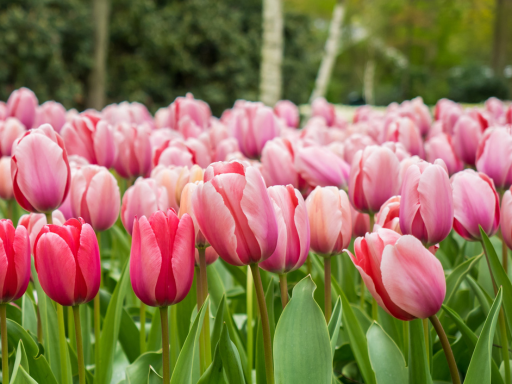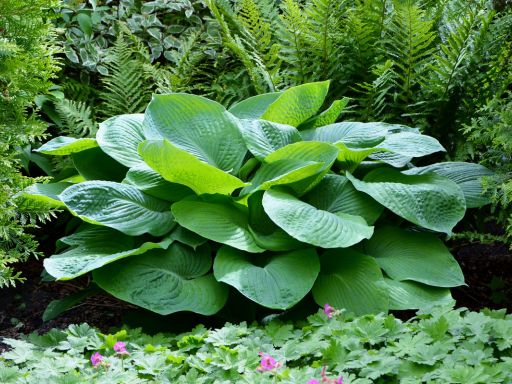Ready to breathe new life into your deck? A beautiful container garden can turn any outdoor space into a vibrant, living retreat bursting with blooms, texture, and color. And with a bit of planning and a few clever tricks, you can design a container garden that’s not only lush and thriving, but also tidy, low-maintenance, and kind to your deck. That means no more soil spills, water stains, mildew patches, or mold creeping beneath soggy pots. Here’s how to get the look you want—without the mess you don’t.

1. Select Plants Carefully
Some plants are beautiful, but messy. And even the most stunning container garden can lead to puddles, stains, or constant cleanup if it’s not designed with maintenance in mind. With strategic choices, you can create a container garden with maximum visual impact and without the mess.
Choose varieties with these characteristics for a deck garden that’s both eye-catching and easy to manage—for more beauty with less work.
Upright or Compact Shape
Plants with a clean, vertical growth habit reduce the need for trimming and the mess that comes with it. They help your containers look neat and intentional without spilling into walkways or unnecessarily dropping debris on your decking.
Try ornamental grasses, rosemary, dwarf cannas, or upright coleus for height and form that stays tidy without pruning.
Exposure Compatibility
Choosing plants suited to your sun or shade conditions helps avoid stress, leaf drop, and leggy growth. Healthy plants in the right exposure are less likely to shed and will stay vibrant with minimal fuss.
For full sun, try lavender, zinnias, and sedum. For shade, consider caladium, impatiens, or hostas in large pots.
Drought-Tolerant Picks
Plants that thrive with minimal water won’t need constant attention, and they reduce the chances of overwatering, runoff, and the puddling that can lead to mildew on your deck.
Look to options like butterfly milkweed, thyme, or coreopsis for sunny spots, and try creeping thyme for shadier corners.
Tidy habits
Clean growers with sturdy stems and long-lasting foliage help keep your deck garden neat. Avoid varieties that shed leaves or petals easily. Skip the berry-producing plants: fallen fruit and droppings from the birds they attract can cause stains (as well as a general mess!).
Popular choices include petunias, dwarf zinnias, marigolds, and chives. For structure without the foliage shed, mix in ornamental salvia or low-growing ornamentals with a fun, velvety texture like dusty miller.
Tip: Pinch off fading blooms and snip back leggy stems during watering checks to keep your containers looking tidy and reduce debris. Removing spent flowers before they fall also prevents petal pigments from transferring to your decking.
Layered Layout
When planning your deck plantings, think in layers to create height, depth, and movement. Place tall containers—like those with ornamental grasses or blue sage—in back corners. Mid-sized flowering pots containing plants such as zinnias or begonias can be placed along railings, and low-profile herbs or succulents can find a great home toward the front. You can also group containers of different heights using the same principle. This multi-dimensional look adds visual interest, protects taller containers from being bumped, and makes your smaller pots easy to reach.
2. Choose Smart Deck Containers
Not all planters are created equal. The right containers can help reduce water runoff, prevent stains, and keep soil exactly where it belongs.
Container Features
Here’s what to look for when selecting containers that help you garden beautifully, without extra cleanup. Consider containers with:
Adequate drainage holes
Good drainage helps your plants thrive and keeps your deck clean by preventing water backup in the pot (which can cause overflow from the top, often carrying soil away with it). Well-placed drainage holes let water exit smoothly, limiting splash, runoff, and erosion.
Saucers to catch overflow
These can help corral extra water (and any soil that may be mixed in) before it hits your deck. Be mindful of standing water in saucers and avoid overwatering to the point of spilling over the brim. Too much water can leave your plant soggy, and the excess can trap moisture against your deck boards, leading to staining, mildew, and even rot over time.
UV- and weather-resistant finishes
Planters with sealed or treated exteriors won’t flake or degrade, and they’re less likely to leave marks on the decking underneath.
Container Types
In addition to helpful features, the style of pot you choose can make a difference. Here’s how some popular container types stack up, and how to use them in ways that keep your deck looking clean and tidy.
Glazed ceramic pots
Glazed pots prevent moisture from seeping through the sides, helping eliminate the risk of water rings and salt stains that are common with unsealed terracotta. They’re also easy to wipe clean and maintain their polished look.
Tip: The bottoms of glazed ceramic planters are often unglazed, so elevate them slightly with pot feet or risers to prevent moisture from getting trapped beneath and staining your deck.
Shallow bowls
Wide, shallow bowls are ideal for low-growing plants like sedum, thyme, or succulents. Their reduced soil depth helps prevent overflow, especially when paired with low-water plants and careful watering. Just be aware that they may dry out faster and require more frequent attention.
Tall containers
Narrow, tall planters are perfect for upright plants like foxglove to add height, but they’re also prone to tipping (especially in windy areas). Likewise, lightweight plastic pots can also blow over on breezy days.
Tip: To avoid messy spills, weigh down the base of top-heavy containers with bricks, stones, or gravel before planting to keep them stable.
Self-watering planters
These are great for anyone who tends to overwater or who wants to water less often. Self-watering pots store excess water in a hidden reservoir, allowing the plant to gradually take up what it needs, thereby helping to avoid overflow. This also reduces the need to water.
3. Keep Soil Contained

Spilled soil will make your deck look untidy. And if left too long, it can clog the gaps between boards, trap moisture, and even lead to staining or mildew. Whether it happens during watering or while potting your plants, it’s an easy mess to prevent with a few smart practices. Here’s how to stay ahead of it:
Transplanting
Avoid transplanting directly on your deck if possible. If you don’t have a potting bench, move the task to the yard where spilled soil can sift down into the lawn or mulch. If you must do your potting on the deck, lay down a tarp or drop cloth to catch stray soil, then shake it out over the lawn or into a bin when you’re done.
Tip: Don’t pour potting mix straight from a big, unwieldy bag into your container—it’s hard to control and easy to spill. Instead, pour some into a bucket or large empty pot first, then use a scoop or trowel to fill your planters with more control and less mess.
Liners
Line pots with landscape fabric or coconut coir before adding soil. These breathable materials act as barriers, keeping soil from washing out through drainage holes while still allowing water to escape. A coir base layer can also absorb some moisture and slow down drainage, helping prevent water from rushing out or splashing over the edge.
Tip: You can even line the bottom of your pot with a coffee filter! This allows water to drain while holding back fine soil particles, thereby limiting soil leaks onto your deck.
Soil Level
Leave at least two inches of space between the soil and the rim of the pot. Overfilling makes it easy for soil and mulch to spill during watering or heavy rain. Leaving this buffer zone helps contain the soil and allows water to settle more gently.
Topping Layer
Top your soil with bark nuggets, a mulch mat, coco liner, or decorative stones. These heavier coverings create a stable top layer that keeps soil from splashing during watering or rain and blowing away in the wind. Unlike fine mulch, they won’t scatter or break down quickly, and they give your planters a clean, finished look. They can also help discourage pets or pests from digging.
4. Water Wisely
Overwatering doesn’t just drown your plants; it can also wreak havoc on your deck. Water that runs straight through containers can carry soil, fertilizer, and plant debris with it, leaving streaks and stains on your decking. And if water pools beneath pots or repeatedly saturates the same spots, it can promote mildew, mold, and rot over time (especially on wooden decking and substructures).
Tip: To extend the life of your deck, shield the frame from water with joist tape beneath the deck surface. Learn more in this helpful guide on how long decks last and how to protect yours for longer.
To keep things tidy, aim for controlled, purposeful watering. Water early in the morning, when evaporation is slowest and plants can absorb moisture more efficiently. Use a narrow-spout watering can, a hose nozzle set to a gentle flow, or a watering wand attachment to hydrate each container at its base, minimizing splashing and dripping onto your deck. For planters with faster-draining soil or smaller soil volume (like railing boxes or wall-mounted pots), pre-wet dry soil before a deep soak. Very dry soil can initially repel water, causing it to run off the surface or spill over the pot. Lightly moisten the top before watering thoroughly to help water absorb evenly, keeping soil and dirty splash-back inside the pot.
Tip: Mix moisture-retaining crystals into your soil to reduce how often you water and limit the runoff that reaches your decking.
5. Elevate Plants
All decking and deck framing benefit from better ventilation under plant containers. Elevating your containers is one of the easiest ways to protect your deck and keep things clean. It prevents trapped moisture, improves airflow, and makes it easier to sweep or rinse underneath.
Pot Risers
Pot feet, wheeled caddies, or even bricks can elevate your containers just enough to:
- Prevent trapped moisture from staining the deck
- Allow airflow to dry the boards beneath
- Make it easier to rinse or sweep under them
This is especially useful for water-loving combos like impatiens and coral bells (Heuchera), which can leave damp spots beneath their pots when sitting directly on your deck.
Mats and Rugs
To group containers while protecting the surface underneath, consider adding an outdoor-rated mat or breathable rug. These options:
- Let water drain through while catching dirt and debris
- Can be hosed off or shaken clean
- Visually anchor your plant layout
For a contemporary look, try a woven mat beneath coordinated ceramic pots filled with silver-leafed plants, such as dusty miller or lamb’s ear.
Tip: Avoid rugs with rubber backings, which can trap moisture and discolor decking. Stick to breathable weaves that drain and dry easily.
Railing and Hanging Planters
Railing-mounted planters are another smart elevation option, and an appealing choice for smaller decks with limited space. Because they hang on the outside of the railing, any excess water drains beyond the deck edge, not onto the surface below. They’re a clean, efficient way to showcase colorful combinations (like petunias paired with trailing lobelia) without adding clutter or drips to your deck area.
Hanging planters suspended from pergolas or overhead hooks, along with wall-mounted pots, let you grow trailing plants like dichondra or verbena without touching the decking at all. They’re a smart way to add greenery at eye level while avoiding moisture buildup beneath your containers. Just be sure they’re securely fastened, easy to reach, and watered with care by following the watering tips shared above.
Tidy Deck, Thriving Garden
You want your deck container garden to turn heads—not leave behind puddles, rings, or stains. With thoughtful plant and container choices, plus a few smart watering and airflow strategies, you can enjoy bright blooms and fresh foliage without inviting unwanted grime or debris into your beautiful outdoor retreat. Here’s to a cleaner, greener deck… happy (container) gardening!
Thanks to our friends at TrexSeal for contributing this guest blog post.
Start your Container Garden
Explore Other Recent Posts
-

Plant Flower Bulbs En Masse
The massed blooms make a bold visual impact, turning an ordinary garden bed into a spectacular floral display.
-

Bright Ideas for a Shade Garden
Learn some tips to turn the dull shaded area of your yard into a colorful relaxing oasis to enjoy.
-

A Tulip for Every Taste
Learn about the many different types of tulips–each with unique bloom times and features.
-

Fall Bulbs for Early Spring Blooms
Plant in fall for a stunning early spring show! Meet the underrated heroes of fall-planted flower bulbs: Crocus, Hyacinth, and Muscari.